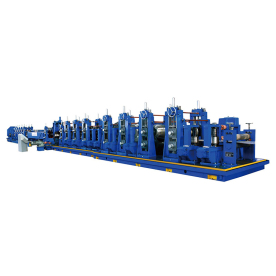[Uncoiler]Understanding the Role of Uncoilers in Metal Processing: Enhancing Efficiency and Streamlining Operations
News 2024-8-8
In the world of metal fabrication and processing, efficiency and precision are paramount. As manufacturers strive to improve their production lines, they continually seek tools and machinery that can enhance output while maintaining quality. One such crucial piece of equipment is the uncoiler. This device plays a vital role in the metal processing industry, particularly in operations involving rolled metal sheets or coils. In this article, we will explore the functions of uncoilers, their types, advantages, and how they fit into the broader context of manufacturing processes.

Understanding the Role of Uncoilers in Metal Processing: Enhancing Efficiency and Streamlining Operations

Understanding the Role of Uncoilers in Metal Processing: Enhancing Efficiency and Streamlining Operations
The primary function of an uncoiler is to support the unwinding of metal coils without causing damage. Coils, especially those made of heavy-gauge materials, can be challenging to handle due to their weight and size. An uncoiler addresses this challenge by using various mechanical elements that control the unwinding process. These machines can vary greatly in design and complexity, ranging from simple manual variants to advanced electric or hydraulic models that offer automated control.
There are several types of uncoilers available, tailored for different applications and materials. The most common types include:
1. **Standard Uncoilers:** These are typically mechanical uncoilers that rely on gravity to unwind the metal coils. They are easy to use and are suitable for lighter materials and smaller coil diameters.

Understanding the Role of Uncoilers in Metal Processing: Enhancing Efficiency and Streamlining Operations
3. **High-speed Uncoilers:** Designed for rapid production lines, high-speed uncoilers can handle fast rotation and meet stringent production demands without compromising safety or quality.
4. **Automatic Uncoilers:** These sophisticated machines feature advanced technology, including sensors and control systems that adjust the unwinding speed according to production needs. Automatic uncoilers are particularly beneficial in environments where precision and efficiency are paramount.
The advantages of incorporating an uncoiler into a manufacturing process are numerous. Firstly, they significantly reduce the time required to handle and process materials. By automating the unwinding process, manufacturers can minimize labor costs and decrease downtime associated with manual handling, leading to increased productivity.
Secondly, uncoilers enhance safety in the workplace. Handling large metal coils can pose serious safety risks to workers. By utilizing uncoilers, manufacturers can mitigate these risks by reducing the manual lifting and maneuvering of heavy materials. Additionally, many uncoilers are equipped with safety features, such as brakes and guards, ensuring that operations can proceed without undue risk.
Moreover, employing an uncoiler improves material handling and reduces waste. Unwinding materials smoothly and steadily minimizes the risk of kinks, bends, or other deformities that can arise from improper handling. This not only preserves the quality of the material but also saves costs associated with scrap and rework.
In conclusion, uncoilers are an essential component of modern metal processing and fabrication operations. Their ability to streamline material handling, enhance safety, and improve efficiency makes them indispensable in manufacturing settings. As technology continues to advance, uncoilers are evolving to meet the demands of the industry, integrating automation and control systems that enable even greater performance. For manufacturers looking to optimize their production processes, investing in a suitable uncoiler is a crucial step towards achieving operational excellence and staying competitive in a fast-paced market.
